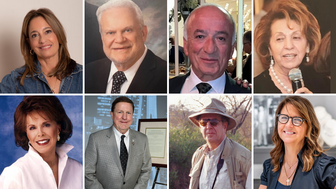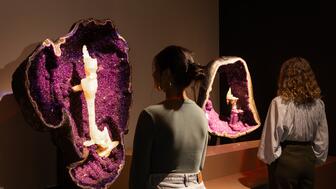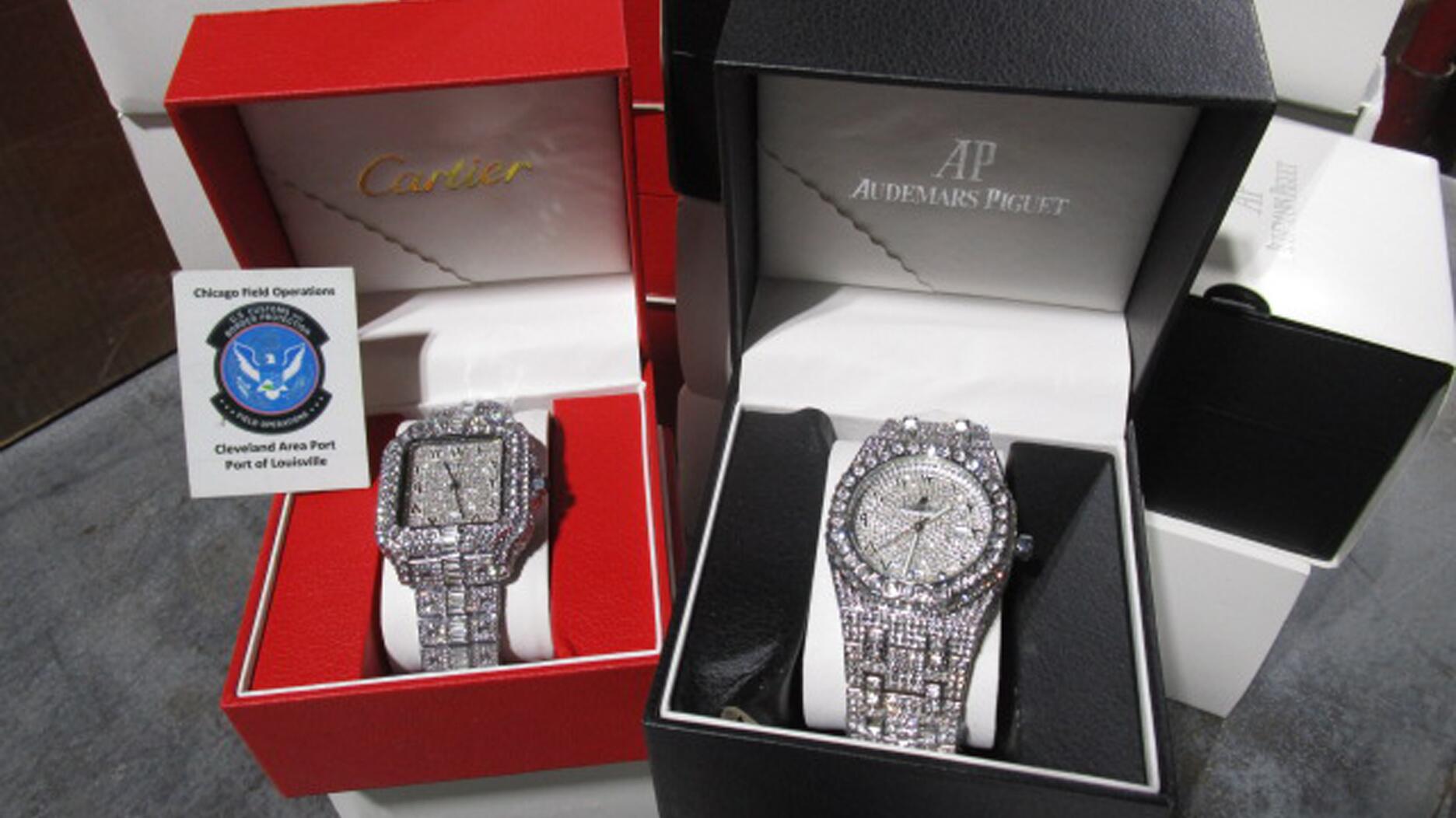The End of an Era: John Kennedy Reflects On 32 Years at JSA
On the verge of retirement, Kennedy recounts the most stressful stretch of his time at JSA and reveals what he’ll miss about the industry.

In March 2024, big news broke.
The Jewelers’ Security Alliance announced that after 32 years on the job, JSA President John J. Kennedy would be stepping down at the end of the year.
While the news wasn’t shared with the wider industry until earlier this year, those in the know—meaning the organization’s board—knew at the beginning of 2021 that JSA’s longtime leader wanted to be out by 2025.
“In my head and in my discussions with my wife, I said, ‘I don’t want to do this if I’m older than about 77, 78,’” says Kennedy. “I’m way past normal retirement age.”
Kennedy turned 77 this past April and he’s not wrong; he’s about a decade past the average retirement age.
But as one of the industry’s most respected leaders, it’s safe to say he hasn’t overstayed his welcome.
Oscar Heyman CEO Adam Heyman, a longtime JSA board member and former board chair, says he considers Kennedy one of his “very best friends” in the industry, and says he felt dismayed when Kennedy told him he was retiring.
“When John told me about his leaving JSA, my first reaction was, ‘I can’t imagine anyone who can follow you,’” Heyman recalls.
“He’s so multi-faceted at what he does at JSA. It’s not only crime prevention; he’s so involved in the financing of JSA. He’s responsible for bringing in all the contributions of people within the industry.”
After more than three decades, it is difficult to imagine anyone at the helm of JSA other than Kennedy, an attorney by trade who started out at a nonprofit and worked for two government-run investigative bodies before joining JSA in the early ‘90s.
Heyman says people are drawn to Kennedy because of his humility and because he listens, an important facet of leadership that, some might say, is a dying art.
“He’s a fabulous listener,” Heyman says. “He hears people, he understands people ... that makes him a great leader.”
Bronx Beginnings
Kennedy was born in the Bronx, New York, and lived in the borough’s Riverdale section until he was about 8 years old when his parents moved the family to suburban Westchester County.
He returned to the borough for high school (Fordham Preparatory School) and college (Fordham University) before attending law school at St. John’s in Queens.
Kennedy says he was top of the class in both constitutional and criminal law at St. John’s, but he knew he didn’t want to be a prosecutor.
His destiny, he thought at the time, was to be a defense attorney, crusading for the rights of the wrongfully accused.
“And of course … nobody’s innocent, unfortunately,” he jokes. “Nobody who can pay you is innocent, that’s the problem.
“I was not thrilled by the idea of going into either the prosecution or the defense of criminal cases, but I still had an interest in crime.”
So, Kennedy took a job heading the criminal justice project at a nonprofit called the Scientists’ Institute for Public Information.
He also relocated from the Bronx, where he lived for a time after law school, to the Upper West Side of Manhattan.
Ahead of its time for the late 1970s, the institute’s project focused on the issue of computers and privacy, specifically as they related to the FBI’s collection of a vast amount of information from the 50 states about people’s criminal histories—arrests, incarcerations, releases, etc.—for its then-nascent National Crime Information Center (NCIC).
Kennedy says while the NCIC exists today in a much more sophisticated form, back then it was riddled with inaccurate information.
He testified before the Senate Judiciary Committee on the issue, which at that time included a Democratic senator from Pennsylvania named Joe Biden, and served on a Congressional Advisory Committee on the issue.
He also was frequently quoted in Computerworld and Science Magazine, all tasks that, in retrospect, were a perfect warmup for the duties he would fulfill at JSA a decade later.
Kennedy liked the job but the Scientists’ Institute for Public Information, “couldn’t really pay the bills after a while. They had financial issues, so it was time for me to move on.”
After the nonprofit institute, he gave academic life a try, working as chairman of the criminal justice department at Jersey City State College (now New Jersey City University), but ultimately found it too repetitive.
From there, he took a job as assistant counsel at the New York State Commission of Investigation, a now-defunct agency that specialized in government corruption.
The most high-profile case Kennedy worked on was the investigation of misconduct by the police and district attorney in Suffolk County in the ‘80s, which Newsday once described as “the most turbulent era” for county law enforcement.
The commission’s investigation culminated in a 200-page report that ultimately spurred then-Gov. Mario Cuomo into action.
“It was semi-successful in that the governor appointed a special prosecutor to go after the people,” Kennedy says. “The special prosecutor, they really didn’t want to go after them though. It was like a political issue and I was really triggered.
“But ultimately, the [Suffolk County] DA resigned and his minions who worked for him, one of them became the DA and that person has subsequently gone to federal prison for his misconduct. They were just a bad bunch of people, a very bad bunch of people.”
After five years at the State Commission of Investigation, Kennedy followed his boss to the New York City Department of Investigation (DOI), where he served as assistant commissioner.
Though his job was mainly administrative, his diplomatic nature—a personality signature to this day—earned him the thankless task of aiding in background checks on government officials and interviewing them about the results, asking questions like, why haven’t you paid federal income taxes in five years?
“You would sometimes find very bad things, and then you would have to talk to them about it and they didn’t like this at all,” Kennedy recalls, laughing. “They absolutely did not like this.”

It was the early ‘90s by this point and Kennedy was still living on the Upper West Side with his wife and two young sons.
He had to live in New York City proper in order to keep working for the DOI but was finding it increasingly difficult financially.
Plus, the city was in the midst of a budget crisis and the department was forced to let go of one-third of its staff, an unpleasant experience that signaled to him that it was time to move on, again.
“When I left, or was planning on leaving, the New York City Department of Investigation, in talking to my commissioner, she wanted to help me get my next job. We were talking and she said, ‘What would you want to do?’ and I said, ‘I’d like to run a small nonprofit and if it could deal with crime, that would be perfect.’
“So, there you go. That’s it,” Kennedy says. “There wouldn’t be many jobs like that in the whole world, but I got one of them so I’m happy with it.”
Another Nonprofit Opportunity
Kennedy first learned of the Jewelers’ Security Alliance through a help wanted ad in the New York Law Journal. JSA’s leader, former FBI agent and federal prosecutor James B. White, was retiring and the organization was looking for someone to replace him.
White interviewed Kennedy for the job, and the coincidences were uncanny.
They had gone to the same high school (Fordham Prep), the same college (Fordham University), and the same law school (St John’s). Kennedy’s two sons were baptized at St. Ignatius Loyola, the parish White attended growing up in Manhattan.
White served as secretary of the 24 Karat Club of New York and so has Kennedy, who says he will remain the organization’s secretary for at least another year after he retires.
Kennedy also was born on the same day as JSA, April 25.

“So, that’s how I got here,” he says. “It wasn’t the jewelry so much; it was the crime aspect and the nonprofit organization aspect that drew me here.
“When you’re at a nonprofit, you get to do a lot of different things. We don’t have a personnel department, we don’t have an IT department … you’re responsible for everything [at a nonprofit]. It’s like running a small business, you have to worry about everything. But it’s fun. And it puts you in [the position of] rubbing elbows all the time with the industry leadership. That’s what I do. Those are the people I know.”
White spent a total of 29 years as president of JSA, starting in the mid-1960s and continuing through the early ‘90s, when Kennedy took over.
When Kennedy retires at the end of 2024, he’ll have logged only three more years than White in the position but witnessed a lifetime of advancements in technology that have made sharing information faster and easier, and photos of suspects clearer.
The first few years Kennedy was president of JSA, the organization dropped advisories in the mail once a month detailing various crimes perpetrated on jewelers nationwide.
These advisories would include maybe three or four images of suspects, Kennedy recalls, mostly artists’ sketches because not many jewelers had security cameras or, if they did, the images were so low quality as to be useless.
Today, JSA circulates about 250 pictures a year of suspects on a weekly basis through email alerts that are opened by thousands.
The organization receives as many as 100 emails per day from members of the industry, asking for advice, reporting suspicious activity, or sharing details of a crime.
“You can’t even keep up with it, people emailing us all the time,” Kennedy says. “It would be impossible for me to personally keep up with all of those emails.”
Technology has changed how JSA disseminates information, making it easier, faster, and more effective, but it’s not the only reason both the number of crimes perpetrated against the industry and dollar losses have declined fairly steadily since the turn of the 21st century.
“Law enforcement departments are just blown away that the jewelry industry has a network like this, and a leader like this.” — Mark Udell, London Jewelers and JSA board member
According to JSA data, in 1999, seven years into Kennedy’s tenure, dollar losses due to jewelry crimes totaled an inflation-adjusted $248.4 million. Ten members of the industry lost their life on job.
In 2023, there were 1,621 crimes totaling $133.2 million in losses, and one person was killed on the job.
Third-generation jeweler Mark Udell, of London Jewelers, has known Kennedy for 25 years and has served on the JSA board for 12 years.
He says JSA’s value to the jewelry industry cannot be overstated, and neither can the importance of the intricate network of relationships Kennedy has built with law enforcement agencies nationwide.
Udell recounts a conversation he recently had with a detective from Nassau County who couldn’t quit remarking on how “amazing” JSA is; the data and information the organization provides to help police crack cases is “incredible.”
“Law enforcement departments are just blown away that the jewelry industry has a network like this, and a leader like this,” Udell says. “And John has been the leader for many, many years. We’re going to be sad to see him leave but he’s put in his time.”
Kennedy concurs about the importance of JSA’s relationship with law enforcement as key to keeping the industry safe, but it wasn’t that way when he took the job in 1992. And, as he would discover, things would have to get a lot worse before they got better.
In 1999 and 2000, less than decade into his tenure, the industry experienced a huge spike in attacks on traveling salespeople and, subsequently, a massive increase in dollar losses.
It was “a really hot issue,” Kennedy says, and to this day constitutes the most stressful period in his 32-year tenure at JSA.
The increase in attacks on traveling jewelry salespeople was significant enough that it attracted the attention of mainstream media. Newsweek, which was a big magazine at the time, Kennedy notes, covered the attacks in its Sept. 6, 1999 issue.
Titled “The Gang That Loves Glitter,” the story detailed the havoc South American gangs were wreaking, terrorizing traveling salespeople all over the country using increasingly violent tactics and making off with tens of millions of dollars in jewels.
“One of my neighbors said, ‘I read about you in Newsweek magazine,’” he recalls. “It was huge.”
It’s a period Heyman remembers well.
He was working as a traveling salesperson for his family’s jewelry company when he was held up at gunpoint at the airport in Columbia, South Carolina, in July 2001.
As Heyman tells it, he was getting out of his rental car when two hooded individuals approached him, guns drawn, and demanded the bag of jewelry he was carrying. Heyman says he did was he was supposed to, and what JSA always recommends—stay calm and cooperate.
After they ran away, Heyman knew exactly who to call.
“John was my very first phone call ... because I then was on the board of Jewelers’ Security Alliance and so much of what we talk about on the board are situations like that.
“I wanted to hear from John what I should do first.”
While Heyman called Kennedy for advice, not everyone phoning JSA headquarters around this time was looking for guidance. Some were calling out the organization for what they viewed as its lack of action.
“We had people calling us all the time, complaining, and giving us grief … [they felt we] weren’t doing enough,” Kennedy recalls.
JSA was under pressure to fix the problem and Kennedy credits Bob Bridge (father of Ed Bridge and grandfather of current Ben Bridge Jeweler CEO Lisa Bridge) with helping to relieve that pressure.
Bridge spearheaded efforts to raise money to hire a lobbying firm for JSA to get the attention of members of Congress and accompanied Kennedy on trips to Washington, D.C., to meet with lawmakers.

“I thought it was beyond us, our tiny little organization, that we were going to go lobby Congress,” Kennedy says. “I said [to myself], ‘we can’t lobby Congress.’ But [Bob] said, ‘No, we’ll do it, we’ll go down.’ And it was very successful, it was super successful.”
Both the U.S. House and Senate recommended in their reports for appropriations that the FBI commit additional resources to investigating and dismantling the South American gangs attacking the jewelry industry.
JSA’s lobbying efforts, and the resulting appropriations, were a turning point for JSA in terms of getting police to pay attention to jewelry crime.
“That was the peak of crime and it’s gone down drastically since then,” Kennedy says. “It’s better enforcement and more information, those two things.”
The drop in the number of salespeople on the road also has contributed, as has Kennedy’s leadership, Heyman says.
“Jim [White] ran a very successful and well-regarded Jewelers’ Security Alliance,” Heyman says.
“However, John came along and he introduced so many new features. He made the jewelry industry a safer place for everybody—jewelers and traveling salespeople.”
“I like the industry a lot. I like the people. You don’t deal with stodgy, corporate people … a lot of them are characters actually, and unusual people.” — John Kennedy, Jewelers’ Security Alliance
Time To Go
Like so many others, Kennedy didn’t come into the jewelry industry with any family connections, but he’s found a home.
He says in 32 years, he can only think of three people he’s had to deal with whom he found to be unpleasant, rude, or inappropriate. He declined to name them, though he did offer this clue to their identity: “Most are dead already.”
“I like the industry a lot. I like the people. It’s funny, you don’t deal with stodgy, corporate people … a lot of them are characters actually, and unusual people. They’re not buttoned-down people, most of them, and it’s fun.
“They are swashbuckling, or they have a different attitude. They’re very upbeat, super upbeat people, I mean always upbeat.”
(He clarifies that is he talking about retailers and “watch guys;” “diamond guys,” he notes with a laugh, “are always downbeat.”)
At the time Kennedy was interviewed for this story at JSA headquarters in the New York City Diamond District, he was mid-purge; he hadn’t reached the packing stage of moving out of his longtime office.
There were still photos on the walls—a picture from a 24 Karat Club of New York past presidents’ dinner, and another featuring the heads of the various jewelry industry associations at Jewelers Mutual’s headquarters in Wisconsin.
Kennedy says it’s hard to say right now, still months out from retiring, if he’s going to miss JSA.
He senses, though, that he won’t miss the stresses—the grind of deadlines and fundraising—but he will miss the people.

The people will miss him too; the feeling was palpable at the JSA’s annual luncheon this past March, held just a couple weeks after news of Kennedy’s retirement was made public.
“People have respect for [John] and that’s important,” London Jewelers’ Udell says.
“When you go to the JSA luncheon in March, you get a couple of hundred people at the New York Yacht Club, you can see how people are talking to him, there’s a crowd around him ... you can see the love people have for him. It’s a beautiful thing.”
But, at age 77 after 32 years at JSA, Kennedy knows it’s time to move on, again.
“I want to go out when things are good, which they are, and when I’m good. I don’t want to go out and be in bad shape. I don’t have any regrets whatsoever.
“It’s time to go.”
The Latest

From influential executives to innovative designers, we pay tribute to the people we said goodbye to this year.

The retailer is expanding into areas with large Indian and South Asian populations.

The Italian brand has opened its first flagship amid the peaks of the Dolomites in Madonna di Campiglio, Italy.

How Jewelers of America’s 20 Under 40 are leading to ensure a brighter future for the jewelry industry.

The new curation at the Natural History Museum of Los Angeles County showcases rare gem and mineral specimens in their uncut, natural state.


Consumers shared concerns about prices, inflation, tariffs, trade, and politics in the survey’s write-in response section.

In February 2026, the auction house will move its headquarters to the former Steinway Hall, a neoclassical landmark on Billionaires’ Row.

Roseco’s 704-page catalog showcases new lab-grown diamonds, findings, tools & more—available in print or interactive digital editions.

The new show will take place Jan. 23-25, 2026.

The former BHP Billiton leader and Gemfields chairman is remembered for his influential leadership throughout his 50-year mining career.

The LVMH-owned brand has partnered with the costume design union to revamp its award for 2026.

The luxury titan inked a deal to acquire an initial minority stake in the jewelry manufacturer with a pathway to full ownership by 2032.

The company’s curation of unsigned vintage and estate jewelry debuted at the Bloomingdale’s in Costa Mesa, California.

Helzberg’s Chief Retail Officer Mitch Maggart shared details about its tests of a new store concept rooted in an elevated luxury experience.

Jewelers of America execs and National Jeweler editors discuss tariffs, the sky-high gold price, and the engagement that broke the internet.

The luxury goods company said founder Ippolita Rostagno will remain at the brand’s helm.

Laura Burdese, who joined the Italian luxury brand in 2022, will take on the role in July.

The National Jeweler editors revisit the most noteworthy industry happenings and design trends from 2025.

Need a gift for the cat lover who has everything? Look no further than our latest Piece of the Week.

It purchased the “Grosse Pièce,” an ultra-complicated Audemars Piguet pocket watch from the ‘20s, for a record-breaking price at Sotheby’s.

The lab-grown diamond grower now offers custom engagement and fashion jewelry through its Kira Custom Lab Jewelry service.

Chandler got his start at Michelson Jewelers and has served as DCA president and CEO since 2001. He will retire at the end of the month.

The boutique is slated to open this week inside Terminal 8, offering pre-owned Rolex watches and more to international travelers.

Sponsored by Digital Monitoring Products

The special-edition egg pendant ingested in a New Zealand jewelry store was recovered after a six-day wait.

Associate Editor Natalie Francisco plays favorites with Piece of the Week, selecting a standout piece of jewelry from each month of 2025.

The “Love and Desire” campaign is inspired by the magic that follows when one’s heart leads the way, said the brand.




























